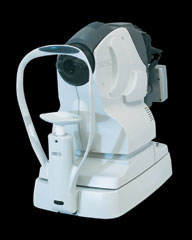Optician looks at the latest camera from Nidek and finds it boasts some useful features for the busy practitioner
 The first sight of the Nidek AFC-210 was at last year's Optrafair, where the prototype (the ANM-3000) created something of a stir. The incorporation of an autofocus facility was very attractive.
The first sight of the Nidek AFC-210 was at last year's Optrafair, where the prototype (the ANM-3000) created something of a stir. The incorporation of an autofocus facility was very attractive.
Any screening test ideally adheres to a number of basic principles. It should be accurate enough to detect any lesions relative to its function (so have a good sensitivity), as well as being specific enough to allow normal eyes to be seen as exactly that.
For any good retinal camera, this really is a matter of ensuring good image quality that can be easily interpreted. The new AFC-210 has several features which ensure just that.
Register now to continue reading
Thank you for visiting Optician Online. Register now to access up to 10 news and opinion articles a month.
Register
Already have an account? Sign in here
